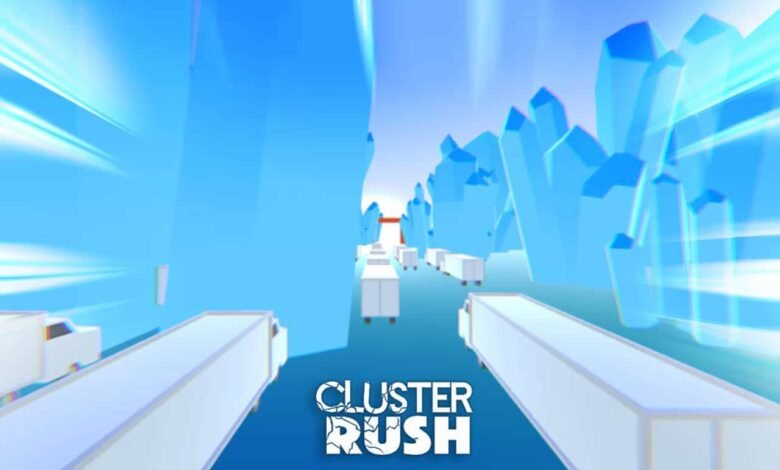The Exciting World of Cluster Rush: A Thrilling Experience Awaits

What is Cluster Rush?
Cluster rush is a term that has gained prominence in various contexts, particularly in gaming, event management, and social dynamics. Its origins can be traced back to gaming, where it describes a scenario in which a large number of players converge towards a particular objective or resource within a limited timeframe. This phenomenon creates a sense of urgency and competition, as players race against each other to achieve a common goal. The concept has since expanded beyond gaming into other sectors, drawing parallels in how people interact and engage in collective experiences.
The primary purpose of cluster rush is to evoke excitement and encourage participation. In gaming, this translates to players collaborating or competing to seize opportunities, often leading to a heightened sense of engagement and thrill. Events that incorporate elements of cluster rush, such as festivals or promotional activities, utilize this principle to enhance audience participation. By creating clusters of excitement, organizers can ensure a lively atmosphere and foster community interaction.
The Psychology Behind Cluster Rush
The phenomenon of cluster rush captivates participants on multiple psychological fronts, intertwining elements of competition, teamwork, and the excitement of high-stakes environments. Understanding these psychological aspects can illuminate why individuals are irresistibly drawn to engage in these exhilarating experiences.
At the core of cluster rush is the innate human inclination toward competition. The desire to outperform others is a powerful motivator that drives many to participate in such events. As individuals vie for supremacy, adrenaline surges, triggering feelings of elation and a sense of achievement when they excel. This competitive spirit is not solely aimed at winning; it also fosters an environment where participants strive to improve their skills and push their boundaries, enhancing their personal and collective experience.
In addition to the competitive facets, teamwork plays a crucial role in the dynamics of cluster rush. Participants often collaborate in groups, working together to strategize and accomplish common goals. This cooperation not only strengthens social bonds among team members but also enhances their emotional and cognitive capabilities. The shared experiences and challenges faced in these situations create a sense of camaraderie, further motivating individuals to invest emotionally and mentally.
The thrill associated with high-stakes scenarios is another significant factor influencing engagement in cluster rush activities. These events often present a blend of uncertainty and risk, allowing participants to navigate unpredictable circumstances. The resultant emotional responses, such as excitement and anxiety, can heighten the overall experience, making it more memorable. The interplay between anticipation and the outcome can lead to an addictive quality, where individuals become drawn to the rush of their experiences.
Thus, the psychological dimensions of cluster rush reveal a complex interplay of competitive instincts, the importance of teamwork, and the allure of high-stakes challenges. Understanding these elements provides insight into the compelling nature of such experiences, helping to explain their widespread appeal across various demographics.
How to Organize a Successful Cluster Rush Event
Organizing a cluster rush event can be a rewarding endeavor, provided that careful planning and consideration are applied at every stage. First and foremost, define the objectives of the event. Clearly establishing what you wish to achieve—be it team building, fostering creativity, or promoting networking—will guide all subsequent decisions and help assign relevant tasks.
Once objectives are set, the next step is to assemble participants. This involves reaching out to potential attendees who share common interests in cluster rush activities. Consider utilizing social media and community boards, ensuring you provide comprehensive information about the event’s goals and what participants can expect. The diversity of participants can enhance the experience, so aim to create an inclusive environment that welcomes individuals from various backgrounds and skill levels.
Choosing a suitable location is crucial to the success of your cluster rush event. Look for a venue that can comfortably accommodate the expected number of attendees and provide necessary facilities such as Wi-Fi, seating arrangements, and catering options. The setting should inspire engagement and collaboration, offering both indoor and outdoor spaces if possible. Safety also plays a critical role; ensure compliance with all health and safety regulations, particularly if the event has a large turnout.
Engagement is key to a successful cluster rush. Incorporate activities and challenges that stimulate creativity and teamwork. Plan a balanced agenda that allows for individual contributions as well as collaborative tasks, encouraging active participation. Additionally, effective marketing strategies can significantly boost attendance. Utilize social media platforms, email newsletters, and community forums to maintain interest and provide updates leading up to the event.
In conclusion, by focusing on clear objectives, assembling diverse participants, selecting the right environment, and employing effective marketing and engagement strategies, your cluster rush event can result in a memorable and successful experience for all involved.
Real-Life Examples of Cluster Rush

The concept of cluster rush has found its application across various domains, providing a captivating dynamic in community gatherings, gaming tournaments, and corporate team-building activities. Each of these examples presents a unique approach to implementing cluster rush, yielding successful outcomes and offering valuable lessons for future events.
In the realm of community interactions, local festivals often exemplify cluster rush. Take, for example, a neighborhood block party. Organizers design competition-based activities that require participants to engage in groups. The excitement builds as families and friends vie for prizes, leading to a fostering of camaraderie. Such events illustrate how cluster rush not only enhances participation but also strengthens community bonds, encouraging connections among residents who might otherwise remain strangers.
Gaming tournaments are another vivid illustration of cluster rush in action. Professional eSports events frequently embed this concept by encouraging teams to form strategies that capitalize on the dynamics of opponents’ clustering during play. The highly competitive atmosphere witnesses players executing coordinated moves to dominate specific areas of the map, creating exhilarating moments for both participants and spectators. Such scenarios highlight the adrenaline-driven rush associated with clustering, showcasing how strategic collaboration contributes to heightened engagement levels.
Moreover, organizations often utilize cluster rush techniques during corporate team-building retreats. Activities tailored around problem-solving in clusters not only enhance teamwork but also stimulate creativity among employees. For instance, scavenger hunts structured in clusters compel groups to navigate challenges collectively, promoting interaction and communication. These realizations provide insights into how effective cluster rush can create a more cohesive work environment and foster professional relationships.
These real-life examples illustrate the diverse applications of cluster rush, each demonstrating its capacity to enrich engagement and create meaningful connections. As we explore these instances, it becomes clear that the principles behind cluster rush can indeed be applied across various settings to cultivate an exciting experience for participants.



